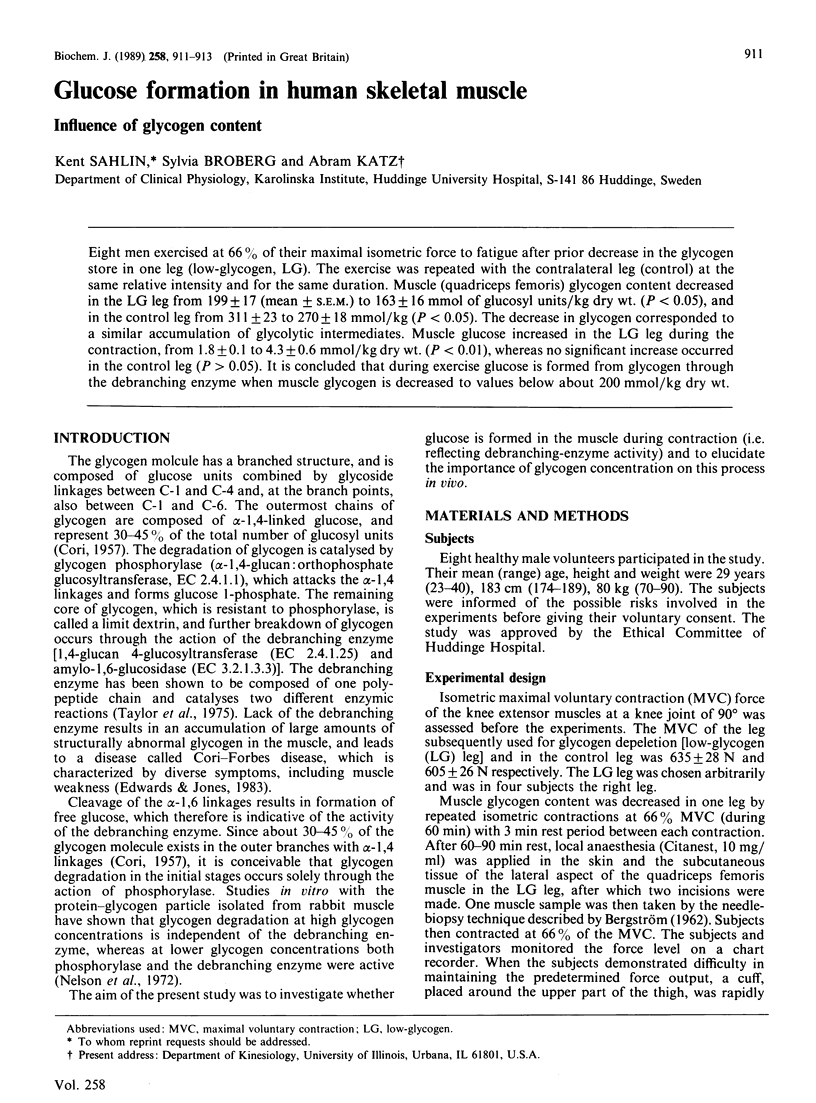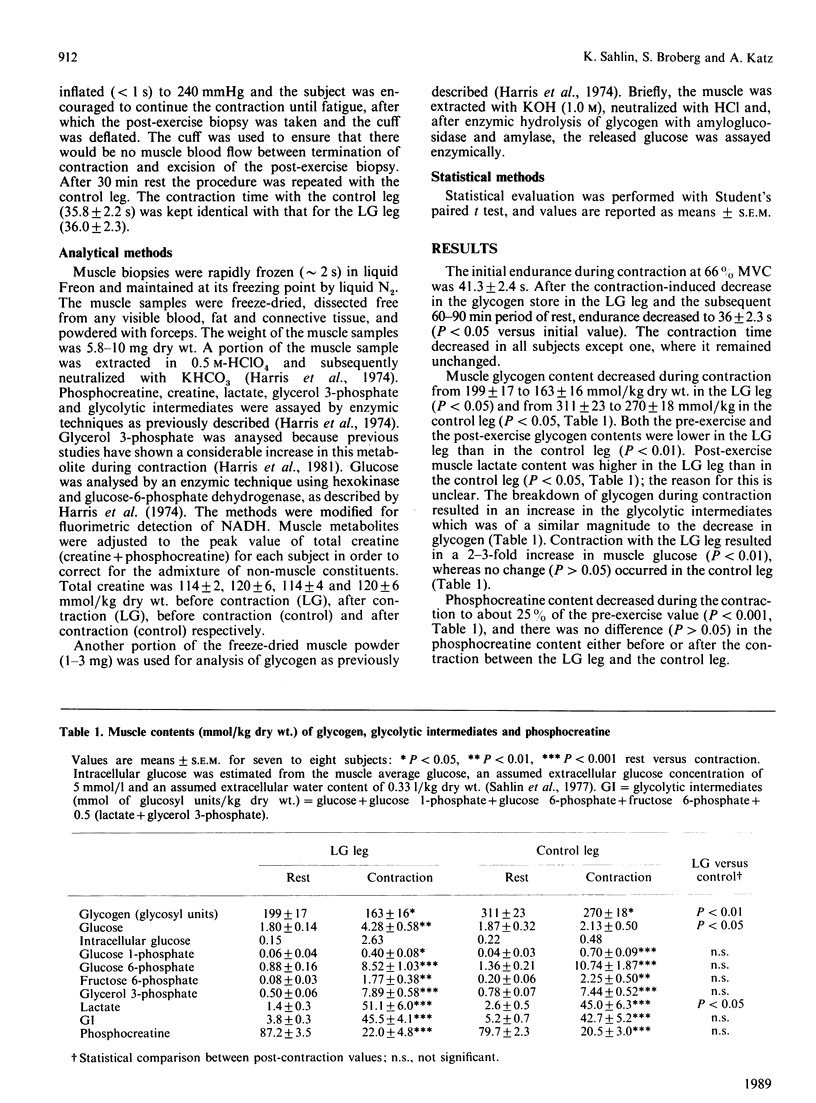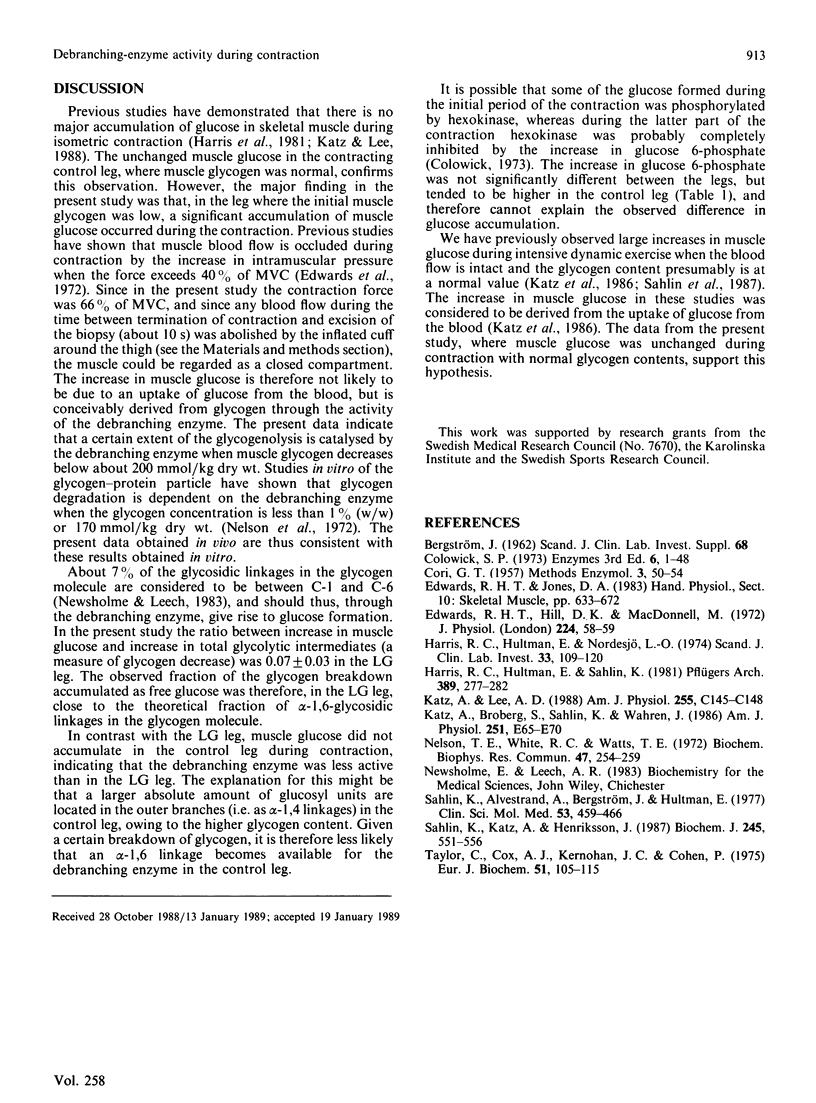Abstract
Eight men exercised at 66% of their maximal isometric force to fatigue after prior decrease in the glycogen store in one leg (low-glycogen, LG). The exercise was repeated with the contralateral leg (control) at the same relative intensity and for the same duration. Muscle (quadriceps femoris) glycogen content decreased in the LG leg from 199 +/- 17 (mean +/- S.E.M.) to 163 +/- 16 mmol of glucosyl units/kg dry wt. (P less than 0.05), and in the control leg from 311 +/- 23 to 270 +/- 18 mmol/kg (P less than 0.05). The decrease in glycogen corresponded to a similar accumulation of glycolytic intermediates. Muscle glucose increased in the LG leg during the contraction, from 1.8 +/- 0.1 to 4.3 +/- 0.6 mmol/kg dry wt. (P less than 0.01), whereas no significant increase occurred in the control leg (P greater than 0.05). It is concluded that during exercise glucose is formed from glycogen through the debranching enzyme when muscle glycogen is decreased to values below about 200 mmol/kg dry wt.
Full text
PDF


Selected References
These references are in PubMed. This may not be the complete list of references from this article.
- Harris R. C., Hultman E., Nordesjö L. O. Glycogen, glycolytic intermediates and high-energy phosphates determined in biopsy samples of musculus quadriceps femoris of man at rest. Methods and variance of values. Scand J Clin Lab Invest. 1974 Apr;33(2):109–120. [PubMed] [Google Scholar]
- Harris R. C., Hultman E., Sahlin K. Glycolytic intermediates in human muscle after isometric contraction. Pflugers Arch. 1981 Mar;389(3):277–282. doi: 10.1007/BF00584790. [DOI] [PubMed] [Google Scholar]
- Katz A., Broberg S., Sahlin K., Wahren J. Leg glucose uptake during maximal dynamic exercise in humans. Am J Physiol. 1986 Jul;251(1 Pt 1):E65–E70. doi: 10.1152/ajpendo.1986.251.1.E65. [DOI] [PubMed] [Google Scholar]
- Katz A., Lee A. D. G-1,6-P2 in human skeletal muscle after isometric contraction. Am J Physiol. 1988 Aug;255(2 Pt 1):C145–C148. doi: 10.1152/ajpcell.1988.255.2.C145. [DOI] [PubMed] [Google Scholar]
- Nelson T. E., White R. C., Watts T. E. The action of the glycogen debranching enzyme system in a muscle protein particle. Biochem Biophys Res Commun. 1972 Apr 14;47(1):254–259. doi: 10.1016/s0006-291x(72)80036-6. [DOI] [PubMed] [Google Scholar]
- Sahlin K., Alvestrand A., Bergström J., Hultman E. Intracellular pH and bicarbonate concentration as determined in biopsy samples from the quadriceps muscle of man at rest. Clin Sci Mol Med. 1977 Nov;53(5):459–466. doi: 10.1042/cs0530459. [DOI] [PubMed] [Google Scholar]
- Sahlin K., Katz A., Henriksson J. Redox state and lactate accumulation in human skeletal muscle during dynamic exercise. Biochem J. 1987 Jul 15;245(2):551–556. doi: 10.1042/bj2450551. [DOI] [PMC free article] [PubMed] [Google Scholar]
- Taylor C., Cox A. J., Kernohan J. C., Cohen P. Debranching enzyme from rabbit skeletal muscle. Purification, properties and physiological role. Eur J Biochem. 1975 Feb 3;51(1):105–115. doi: 10.1111/j.1432-1033.1975.tb03911.x. [DOI] [PubMed] [Google Scholar]


